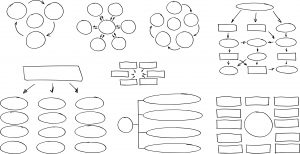Why structure is good and more structure may be better…
Apr 05th
‘There’s a whole lot of new ideas on org design out there – flatter, more agile, non-hierarchical, cellular, networked – how to know what might help in our reorganisation?’
You want to find an organisation design and structure that won’t just not get in the way of organisation performance but will help drive results by allowing the work, the information and the energy of people to flow. You want an organisation design that will be able to shift and re-balance itself in an agile way to respond to or anticipate changes in the market, in technology and in the industry dynamics.
This search often starts out as a turning away from ‘old’, ‘traditional’, ‘bureaucratic’, ‘hierarchical’ structures and an experimentation with agile organisation methods or flatter, self-managing, participative approaches – of which Holacracy is probably the exemplar brand.
But there is hierarchy and hierarchy. Elliot Jaques wrote the HBR article In Praise of Hierarchy years ago to lay some misconceptions and to set out the conditions under which organisation structure and hierarchy don’t just work but work well. He called his overriding approach ‘requisite organisation’ – the structure and organisation that is required for optimal functioning. Others have developed the ‘requisite organisation’ approach including Brian Dive, whose DMA (Decision Making Accountability) solution has been developed and applied in Unilever and Tesco and others (and is also applied as Space to Lead)
What might surprise you – and gives some of the solid answers to organisation design questions – is that Holacracy and DMA have a lot in common.
- Both start with the front line – the doers – what the work is and how it is organised and build ‘structure’ or organisation from there
- Both take the organisation’s purpose ( or mission) as the touchstone to judge the design
- Both predict that the outcomes of autonomy, devolved decision making, empowerment, greater productivity, job satisfaction, personal development will come as by-products of getting the organisation right first
- Both say that structure in the broadest sense, including boundaries and rules, is key to good organisation design
- Both say that the right ‘structure’ – like Goldilocks not too little, not too much – gives the clarity, boundaries and freedom for people to give of their best
- Both focus on role clarity first and separate the role from the person in the role
I’d summarise the starting point of both approaches as ‘get the role clear, get accountabilities and boundaries of the role clear, create roles with the authority, headroom and elbowroom to add value to others and deliver on their purposes and accountabilities.’
There is a lot more to DMA and Holacracy than this, and there are substantial differences between them but don’t let that distract from the key point we can get from both approaches: clear roles and accountabilities are at the heart of every successful organisational form. Start there and you have a solid foundation.
JBJ


